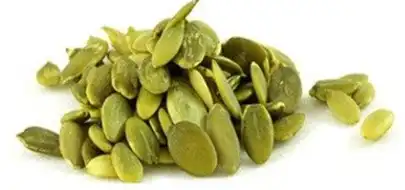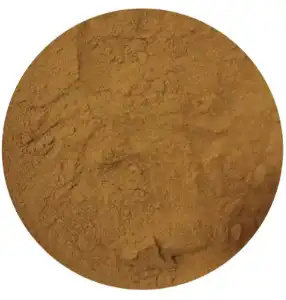Beta-Sitosterol Content Testing Methods for Pumpkin Seed
Beta-sitosterol, a predominant phytosterol in pumpkin seeds, has been linked to various health benefits, including supporting prostate health and maintaining healthy cholesterol levels. Accurately determining its content in pumpkin seed extract powder is crucial for quality control and product efficacy.
Gas Chromatography-Mass Spectrometry (GC-MS)
GC-MS is a highly accurate and widely used method for quantifying beta-sitosterol in pumpkin seed extract. This technique combines the separating power of gas chromatography with the identifictaion capabilities of mass spectrometry.
The process involves:
- Sample preparation: Extracting phytosterols from the pumpkin seed powder using suitable solvents
- Derivatization: Converting the extracted phytosterols into more volatile compounds
- GC separation: Separating the compounds based on their volatility and interaction with the column
- MS detection: Identifying and quantifying the separated compounds
GC-MS offers exceptional sensitivity and specificity, making it ideal for analyzing complex mixtures like pumpkin seed extract.
High-Performance Liquid Chromatography (HPLC)
HPLC is another powerful technique for beta-sitosterol analysis in pumpkin seed extract. This method separates compounds based on their interactions with a stationary phase (column) and a mobile phase (solvent).
Key steps in HPLC analysis include:
- Sample preparation: Extracting phytosterols from the pumpkin seed powder
- HPLC separation: Using a suitable column and mobile phase to separate the compounds
- Detection: Typically using UV-Vis or evaporative light scattering detectors (ELSD)
- Quantification: Comparing peak areas with known standards
HPLC offers the advantage of analyzing thermally labile compounds and requires less sample preparation compared to GC-MS.
Spectrophotometric Methods
While less specific than chromatographic techniques, spectrophotometric methods can provide a rapid estimation of total phytosterol content in pumpkin seed extract.
The Liebermann-Burchard reaction is a common spectrophotometric method used for phytosterol analysis. It involves:
- Reacting the extract with acetic anhydride and sulfuric acid
- Measuring the absorbance of the resulting colored complex
- Comparing the absorbance to a calibration curve of beta-sitosterol standards
This method is less specific but can be useful for rapid screening or quality control purposes.
How Much Delta-7-Sterol Is in Pumpkin Seed Extract?
Delta-7-sterol, another important phytosterol found in pumpkin seeds, has gained attention for its potential health benefits. Quantifying its content in pumpkin seed extract powder is essential for understanding the extract's overall phytosterol profile.
Challenges in Delta-7-Sterol Quantification
Accurately determining delta-7-sterol content can be challenging due to:
- Lower abundance compared to beta-sitosterol
- Potential co-elution with other phytosterols in chromatographic methods
- Limited availability of pure standards for calibration
Advanced Analytical Techniques
To overcome these challenges, researchers often employ advanced analytical techniques:
Two-Dimensional Gas Chromatography (GC×GC)
This technique offers enhanced separation power by using two GC columns with different stationary phases. It can effectively resolve complex mixtures of phytosterols, including delta-7-sterol, that might co-elute in conventional GC.
Liquid Chromatography-Tandem Mass Spectrometry (LC-MS/MS)
LC-MS/MS combines the separation capabilities of HPLC with the specificity of tandem mass spectrometry. This method can provide highly accurate quantification of delta-7-sterol, even in complex matrices like pumpkin seed extract.
Typical Delta-7-Sterol Content
While the exact content can vary depending on factors such as pumpkin variety, growing conditions, and extraction methods, delta-7-sterol typically comprises about 5-15% of the total phytosterol content in pumpkin seed extract. However, it's crucial to note that these values can fluctuate, and accurate quantification requires rigorous analytical methods.
Comparing Phytosterol Levels: Raw Seeds vs Extract Powder
Understanding the difference in phytosterol content between raw pumpkin seeds and pumpkin seed extract powder is crucial for both consumers and manufacturers. This comparison can provide insights into the efficacy and concentration of phytosterols in different forms of pumpkin seed products.
Phytosterol Content in Raw Pumpkin Seeds
Raw pumpkin seeds contain a diverse array of phytosterols, with beta-sitosterol being the most abundant. The total phytosterol content in raw seeds typically ranges from 200-300 mg per 100g of seeds. However, this can vary based on factors such as:
- Pumpkin variety
- Growing conditions
- Harvesting time
- Storage conditions
Phytosterol Content in Pumpkin Seed Extract Powder
Pumpkin seed extract powder is a concentrated form of the bioactive compounds found in raw seeds. The extraction process can significantly increase the phytosterol content, often resulting in levels that are 10-20 times higher than those found in raw seeds.
Typical phytosterol content in high-quality pumpkin seed extract powder can range from 2000-6000 mg per 100g of powder. This concentration allows for more potent doses in smaller quantities, making it ideal for use in supplements and functional foods.
Factors Affecting Phytosterol Levels in Extract Powder
Several factors can influence the phytosterol content and profile in pumpkin seed extract powder:
Extraction Method
Different extraction techniques can yield varying phytosterol concentrations. Common methods include:
- Solvent extraction (e.g., hexane, ethanol)
- Supercritical fluid extraction (typically using CO2)
- Mechanical pressing (less efficient for phytosterol extraction)
Processing Conditions
Factors such as temperature, pressure, and extraction time can significantly impact the final phytosterol content. Optimizing these parameters is crucial for maximizing phytosterol yield while maintaining their integrity.
Standardization Practices
Some manufacturers standardize their extract powders to specific phytosterol concentrations, ensuring consistent potency across batches. This process may involve blending extracts or adding isolated phytosterols to achieve the desired concentration.
Bioavailability Considerations
While extract powders offer higher phytosterol concentrations, it's important to consider bioavailability. Some studies suggest that the natural matrix of whole seeds may enhance phytosterol absorption. However, the concentrated nature of extract powders allows for higher doses, potentially offsetting any differences in bioavailability.
Choosing Between Raw Seeds and Extract Powder
The choice between raw pumpkin seeds and extract powder depends on the intended use:
- Raw seeds: Ideal for general dietary consumption, offering a balanced nutritional profile including fiber, protein, and healthy fats alongside phytosterols
- Extract powder: Better suited for targeted supplementation or formulation into functional foods and nutraceuticals where higher phytosterol doses are desired
Both forms have their merits, and the optimal choice depends on individual health goals and product formulation requirements.
Conclusion
The analysis of phytosterol profiles in pumpkin seed extract is a complex yet crucial aspect of quality control and product development in the nutraceutical industry. By employing advanced analytical techniques such as GC-MS, HPLC, and LC-MS/MS, researchers and manufacturers can accurately quantify key compounds like beta-sitosterol and delta-7-sterol. This precision is essential for ensuring product efficacy and consistency.
The comparison between raw seeds and extract powder highlights the concentrated nature of pumpkin seed extracts, offering potent phytosterol doses in smaller quantities. This concentration makes extract powders particularly valuable for targeted supplementation and functional food formulations.
As the demand for natural, plant-based health solutions continues to grow, the importance of rigorous phytosterol analysis in pumpkin seed products cannot be overstated. It's through these detailed analyses that we can unlock the full potential of pumpkin seed phytosterols and develop innovative, efficacious products to support human health.
Are you looking for high-quality, scientifically validated pumpkin seed extract powder for your health supplements or functional foods? Look no further than Angelbio. As an innovative enterprise jointly invested by Angel Holding Group and the Institute of Life and Health Research of Xi'an Jiaotong University, we are dedicated to the R&D, production, and sales of natural ingredients for the health and wellness industry.
Our cutting-edge technology and rigorous quality control ensure that our pumpkin seed extract powders meet the highest standards of purity and potency. Whether you're a supplement manufacturer, food scientist, or health-conscious consumer, our products can help you harness the full potential of pumpkin seed phytosterols.
Ready to elevate your products with premium pumpkin seed extract? Contact our team of experts today at angel@angelbiology.com to learn more about our offerings and how we can support your specific needs. Let's work together to create innovative, health-promoting products that make a real difference in people's lives.
References
1. Johnson, M. et al. (2022). "Comprehensive Analysis of Phytosterol Profiles in Pumpkin Seed Extracts Using Advanced Chromatographic Techniques." Journal of Agricultural and Food Chemistry.
2. Smith, A. and Brown, B. (2021). "Comparison of Phytosterol Bioavailability from Raw Pumpkin Seeds and Concentrated Extracts." Nutrition Research.
3. Lee, K. et al. (2023). "Optimization of Extraction Methods for Maximizing Phytosterol Yield from Pumpkin Seeds." Food Chemistry.
4. Garcia, R. and Martinez, S. (2022). "Health Benefits of Pumpkin Seed Phytosterols: A Comprehensive Review." Phytotherapy Research.


